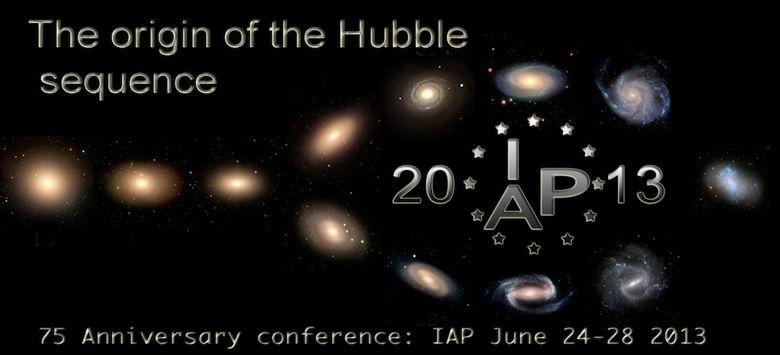
Scientific Rationale
Observational information on the morphology of galaxies and its dependence on environment is routinely
becoming available for galaxies up to redshift two and beyond, and matched samples at low and high redshift
allow the study of the evolution of many physical properties of galaxies for most of the history of our
Universe in unprecedented detail. Galaxies appear quite different at high redshifts, clumpy and perturbed,
with thick disks, and quite far from the current Hubble sequence.
 At the same time, thanks to a well established paradigm of cosmological structure formation, many of the
boundary conditions for galaxy formation are now fixed. Modern simulations based on this paradigm have
established a tight connection between the geometry and dynamics of the large scale structure of matter
on the one hand, and the evolution of the physical properties of forming galaxies on the other.
At the same time, thanks to a well established paradigm of cosmological structure formation, many of the
boundary conditions for galaxy formation are now fixed. Modern simulations based on this paradigm have
established a tight connection between the geometry and dynamics of the large scale structure of matter
on the one hand, and the evolution of the physical properties of forming galaxies on the other.
Key questions formulated many decades ago are nevertheless not satisfactorily answered. What are the main
drivers determining the morphology of galaxies which are responsible for establishing the Hubble sequence.
When did this happen? To what extent should numerical simulations be trusted to help answering these
questions?
The purpose of this conference is to take stock of recent progress of both observation and simulations in
order to understand the origin and evolution of the Hubble sequence within an increasingly well defined
cosmological paradigm for galaxy formation.
The discussion at the conference will focus on the interaction of galaxies with their environment and on
the influence of the cosmic web and large scale structure dynamics. Some of the discussion will be
dedicated to an critical assessment of the role of cold flows, merger/interaction history, star formation
history and stellar feedback, secular evolution due to internal perturbations driven by instabilities, and
nuclear activity and AGN feedback. The conference thereby aims at helping to disentangle the relative
effect of all these interconnected influences on galaxy morphology which will be crucial for a proper
understanding of the origin of the Hubble sequence.
|
Conference summary:
|
Contact: |
conferenceIAP2013@iap.fr |
Confirmed key speakers:
|
|
|
|
SOC:
|
|
|
|
LOC:
|
|
|
|

Last updated: 18 March 2013








